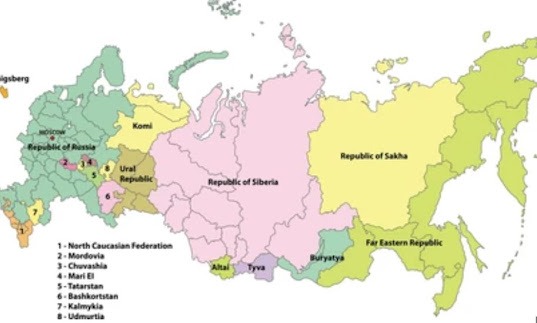1 Year After Russia-Ukraine War (Chapter 3) : The Unfolding Crisis
It's a series, so if you haven't seen the previous episode, go watch it
1 Year After Russia-Ukraine War (Chapter 2)
where we delve into current events and analyze the complex dynamics of the Ukraine-Russia conflict. In this post, we will explore the reasons behind Russia's aggression and the implications of its refusal to back down. Additionally, we will examine the potential consequences for the Russian Federation as a whole. Let's unravel the layers of this crisis and gain a deeper understanding of the shifting global order.
Understanding Russia's Aggression
The conflict in Ukraine has brought to light the looming possibility of Russia's intervention. As Ukraine's NATO membership becomes increasingly likely, and with Putin's Pax Russia losing credibility, it is crucial to examine why Russia initiated this aggression and why it persists. However, there is one significant factor that contributes to Russia's unwillingness to retreat – the potential disintegration of the Russian Federation.
The Fragile Nature of the Russian Federation
Russia is not merely a single entity but a federation composed of various constituent entities, including six federal districts, autonomous republics, and federal cities, totaling 89 distinct subjects. This diverse composition naturally gives rise to conflicts and tensions between Russia and its constituent regions. We can expect that if Russia weakens, several of these regions would demand independence.
Consequences of Russian Retreat
Russia would have major problems if it were to withdraw from the conflict. The power struggle within Russia would intensify, resulting in chaos. Many member territories would embrace the opportunity for freedom and declare independence. As a result, the Russian Federation would disintegrate, giving birth to roughly 20 new republics. Russia's route to recovery would become extremely tough, both in terms of restoring influence and rebuilding its economy. The high costs of the conflict, as well as the economic sanctions imposed by Western nations, have already taken a heavy toll on Russia's economy. Furthermore, with a major section of its youth conscripted, Russia would be short on manpower. As a result, the likelihood of Russia's complete collapse or fragmentation grows.
The Impact on Global Order
This catastrophe has already caused a seismic shift in the global order. The 70-year period of relative peace that followed World War II, during which the United Nations and other international organizations battled to keep the world at peace, is now under threat. Europe, in particular, has been rocked. Russia, a once-threatening state that posed a threat as the Soviet Union, has now targeted Ukraine, a country that wants closer connections with Europe. As a result, faith in peace has been broken, and the prospect of a new Cold War looms large. The situation in Europe is unsettling, similar to the hypothetical scenario of China conquering Taiwan. European nations have begun measures to bolster their defense capabilities in response to increased insecurity, potentially leading to an arms race. Even Germany, often regarded as a stabilizing power, has begun the process of rearmament. As tensions rise, the United States, Europe, China, and Russia find themselves at odds, resulting in a chasm reminiscent of the Cold War.
Striving for Peace in Troubled Times
Amidst this global uncertainty, our sincere hope is that the Ukraine-Russia conflict follows the most peaceful scenario possible. We encourage the world to seek cooperation and synergy rather than falling into confrontational and antagonistic stances. Let us work towards a path of peace, striving for a world where nations come together to resolve conflicts through dialogue and cooperation. May we move beyond the tumultuous brink of war and foster a longer era of peace.




댓글
댓글 쓰기